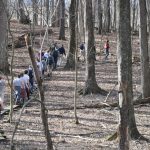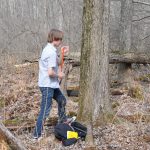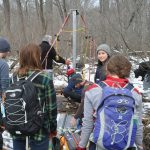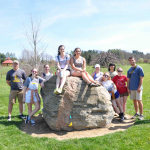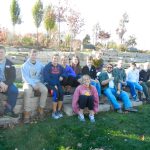On Monday, September 27th, Wooster’s Climate Change class hit the road for Kidron, Ohio’s Sonnenberg Village.
The settlement is a rejuvenation project aimed to relocate and reconstruct over a dozen 19th century buildings on this five-acre sight. In addition to preserving these historical structures, the project incorporates environmental responsibility into its model by including sustainable living elements in its long-term plans.
Already, a garden is growing and three buildings have been successfully transferred to the sight. But a fundamental piece of their heritage remains unknown—when exactly were they built?
This is where the climate experts come in. Teaming up with College of Wooster faculty and students, representatives from Sonnenberg Village have invited Greg Wiles and his Climate Change students on site to discover the origins of these precious pieces of Ohio’s history.
When the team arrived they got right to work extracting samples. Using the method of Dendrochronology, otherwise known as Tree-Ring Dating, the team used their expertise and precision to muscle their way into the history of mid-western American architecture.
Without damaging the integrity of these structures, the geo-team successfully extracted samples from a reconstruction in-progress, the Lehman Spring House, and the larger Lehman House. Now, let the investigation begin!
After carefully prepping the core samples, dendrochronolgical evaluation began today. The team is diligently counting and measuring tree growth rings, determined to discover the date early Ohioans constructed these historical shelters. Lab work will continue until the Geo-team reports back on the solved mystery of Sonnenberg Village.


















